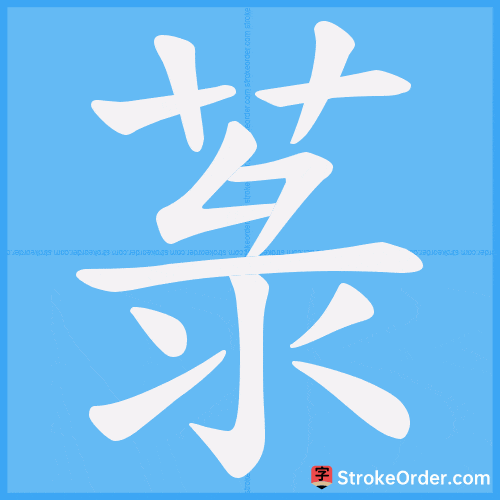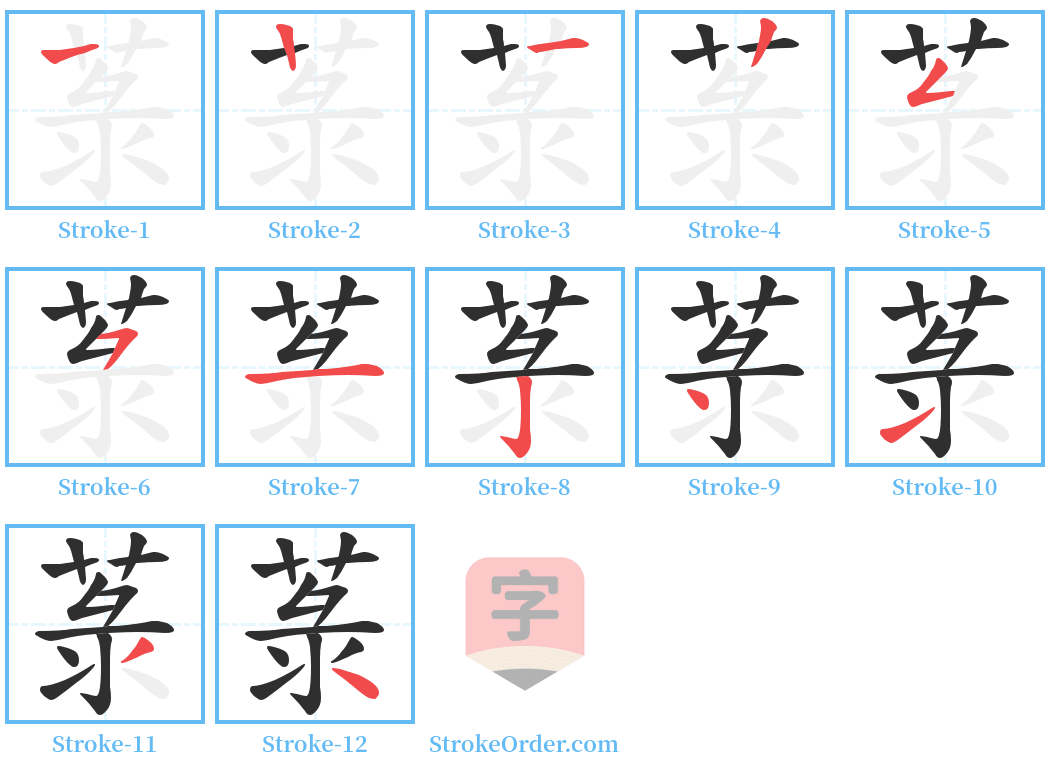菉 Stroke Order
Animated Stroke Order of 菉

Stroke Order Diagrams for 菉

Information of 菉
Pinyin
lù
Radical
艹
Strokes
11 strokes
Usage
★★
Definition
菉 [lù]
1. A type of grass, specifically "hispid arthra-xon." Also known as "王刍" (Wang Chao).
2. An annual, delicate herbaceous plant. The leaves are oval to lanceolate in shape, resembling bamboo leaves. It grows on grassy slopes or in humid areas and is used as fodder. Both the stems and leaves have medicinal properties, and the juice can be used as a yellow dye.
3. In ancient texts, it is noted that 菉 is a term for "green" and is sometimes connected to the term for "record" or "to record."
引:
1. From the "Shuo Wen": 菉 found in "Wang Chao," which derives from grass and means "to record sounds."
2. In "Chuci·Zhaohun": 菉蘋齐叶兮.
3. 菉 resembles bamboo, growing five to six feet high, referred to as 菉竹 by people by the Qi River. — From "Shijing·Qi'ao Caomu" annotation.
Example: 菉竹 (another name for hispid arthra-xon); 梅菉 (a place name in Guangdong).
See also: 绿豆 (lü dòu) (mung bean).
Noun: A plant name in the family Polygonaceae, genus Persicaria, an annual herb. The stem is upright or reclining and branched, green in color. The leaves are blunt-tipped, alternate, and can be oval, lanceolate, or linear. The flowers have short pedicels, with petals that are oval and can be green, light green, or reddish-green. The entire plant exhibits diuretic, anti-inflammatory, and antidiarrheal properties.